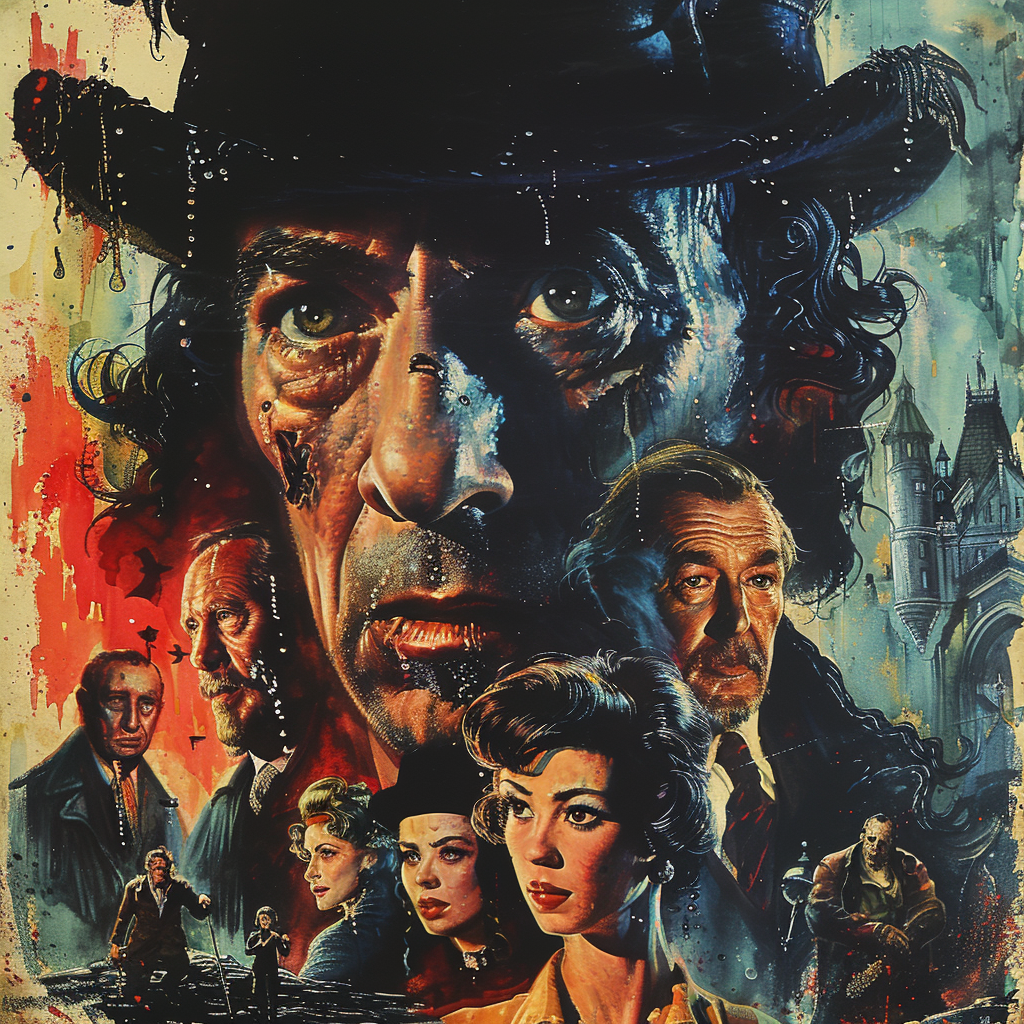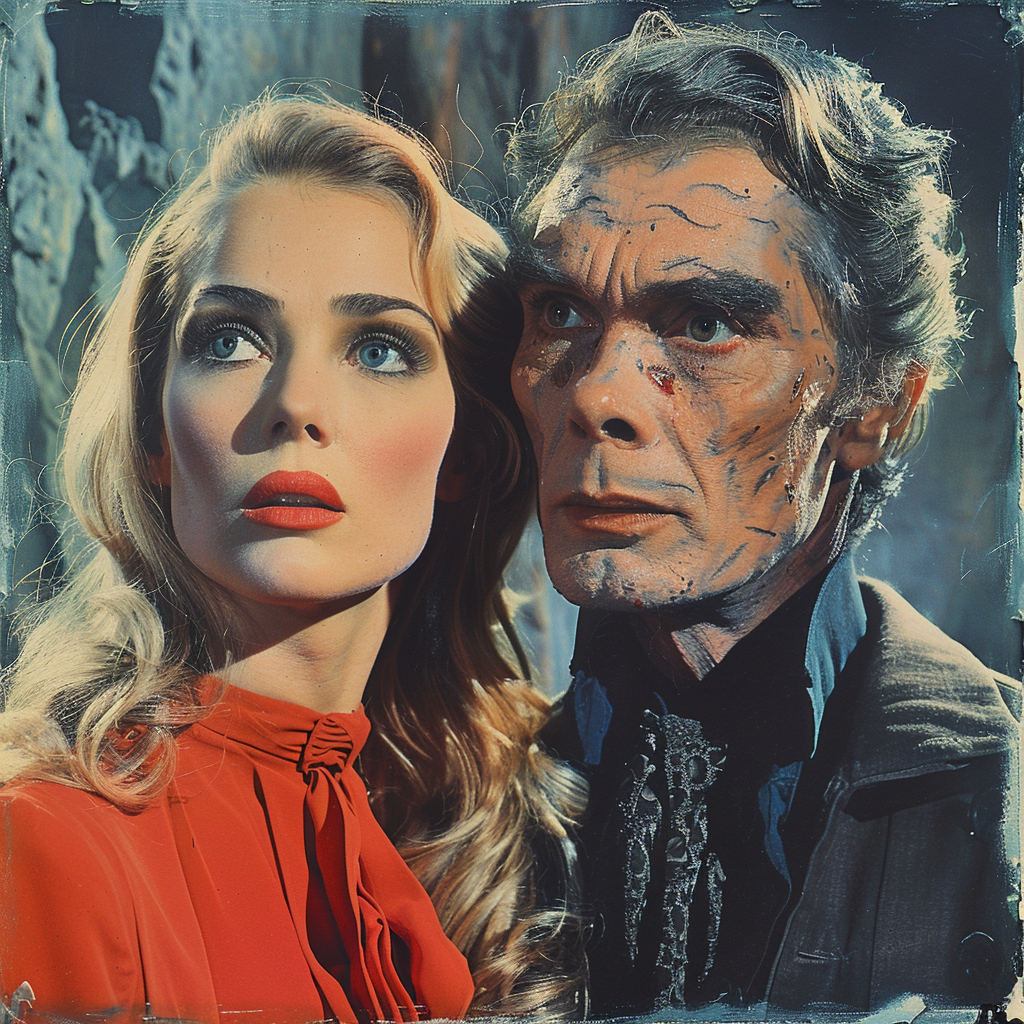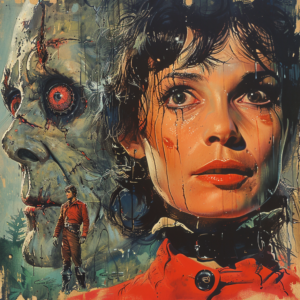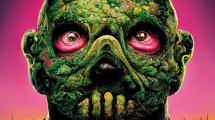Introduction
Hammer Films is a British production company that was founded in 1934. The company is most well-known for producing gothic horror films, usually featuring classic monsters like vampires, mummies and werewolves. Over its long history, Hammer Films has produced some of the most famous horror movies of all time, from Dracula to Frankenstein, as well as classic suspense thrillers and war dramas.
The company’s success began in the late 1940s when it released The Curse of Frankenstein, which introduced audiences to Christopher Lee’s iconic portrayal of Count Dracula. Following its success, Hammer quickly produced a slew of similar feature horror films that featured Universal Monsters and other popular characters. Its titles included Horror From Beyond the Grave (1958), The Gorgon (1964) and Rasputin the Mad Monk (1966). By 1959, the studio had become one of Britain’s largest film production companies.
However, Hammer Films experienced a decline in popularity throughout the 1970s due to changing tastes in filmgoers and competition from larger Hollywood studios. With no major successes during this period, Hammer eventually went bankrupt in 1979 and closed its doors. In 2007, however, the brand was revived with new investments from Brian Clemens and Julius Humble taking control of the production company for their revived Hammer Horror Pictures venture in 2010. The renewed vision for Hammer Films continues to produce critically acclaimed horror movies such as Let Me In (2010) and Woman in Black (2012).
Overall, Hammer Films remains one of Britain’s most beloved production companies thanks to its rich history of classic horror films that will be remembered for generations to come. Not only has it produced timeless classics such as Frankenstein Meets the Wolf Man (1943), but also modern hits such as The Quiet Ones (2014) and The Woman in Black 2: Angel of Death (2014). This commitment to quality filmmaking has earned them numerous accolades over the years including a BAFTA Award for Outstanding British Contribution to Cinema in 2010 and induction into the likes of Entertainment Weekly’s “Greatest Cult Film Directors” list.

Examining the Early Years of Hammer Films and their Unique Style
The history of Hammer Films began in the mid-1950s. Founded by William Hinds, it is widely considered to be a pioneer of the horror genre. The studio was named after Hammersmith, London, the area where it was located. Hammer Films quickly became known for their signature style of mixing Gothic atmosphere with explicit violence and sex appeal. This type of combination pushed the boundaries of the popular horror genre, propelling the studio to instant success.
Their portfolio soon included classics such as 1956’s The Curse of Frankenstein, 1958’s Dracula and 1959’s The Mummy as well as several continuing cycles like “Dracula” and “Frankenstein”. They soon explored other genres such as science fiction (1981’s Xtro), comedy (1972’s Bless This House), psychological thrillers (1960’s Taste Of Fear) and war films (1966’s The Moon-Spinners). With audiences eager for more content, Hammer Films expanded into television adaptations, foreign productions and even softcore pornography with their ‘Confessions’ series beginning in 1972. By the end of their long career, Hammer Films had ventured into different genres that extended beyond British borders into Europe and North America.
With cultural changes occurring throughout the 1970s and 1980s in horror styles and tastes, Twentieth Century Fox purchased Hammer Films in 1979. Attempting to stay up-to-date with emerging trends in cinematography including techniques such as sound design, music score composition and special effects, Hammer co-produced several high budget redevelopments between 1979–1984 such as Andrew Birkin’s Gossip starring John Hurt; Peter Sasdy’s Humanity starring Peter Cushing; Terry Gilliam’s early effort BloodBaron Tony Richardson; Ridley Scott’s controversial portrayal of macabre sexuality and medieval ritualism Macbeth;and Menahem Golan’s Much Ado About Nothing starring Kenneth Branagh among others – though commercial successes were hard to come by due to poor reviews from critics who found these interpretations lacking in authenticity due to them having veered off from the original sources or being judged too outrageous without sufficient change. These box office disappointments together with their investments in large scale Hollywood productions proved catastrophic for their financial state causing them eventually close down production altogether during late 1984 when they filed for bankruptcy although a few projects continued until 1996 under license from Toms Classics Ltd when finally all operations ceased completely resulting what been astonishingly short but spectacular 55 year run for one of most intriguing studios British film industry has ever seen .
Exploring Classic Horror Films from Hammer Films
Hammer Films remains one of the most iconic and influential film production companies of all time. Founded in 1934 by two immigrants, William Hinds and Enrique Carreras, Hammer Films quickly became famous for their classic horror films. During the 1950’s, they began making a series of horror-tinged adaptations based on Universal’s stable of classic monsters. For example, they updated The Mummy (1932) with Christopher Lee as the Mummy in 1959 and The Curse of Frankenstein (1957), with Peter Cushing taking up Dr. Frankenstein’s mantle.
The psychological allure that these movies possessed soon struck a chord with movie audiences around the world, as Hammer rose to prominence due to their ability to combine traditional horror tropes and modern narrative techniques, creating an atmosphere that was both frightening yet arresting at the same time. These works pushed boundaries further when it came to sexual taboos with subjects such as vampirism and lycanthropy – an approach which became popularly known as “Hammer Horror”.
It wasn’t until late in its history that Hammer pivoted away from strictly making horror films to produce other types of genres like comedies and science fiction. By this time many leading figures associated with the studio had retired or left altogether but despite this setback, Hammer continued released some critically acclaimed works such as Twins Of Evil (1972) a vampire themed flick exploring morality which happens to be one of Hammer’s last great contributions to the genre before production ceased in 1979 due to financial difficulties and declining popularity of their brand of horror movies. Nevertheless, thanks to various remakes over new decades – including some by original members such Chris Lee – Hammer continue their legacy as one of cinema’s greatest producers who made possible for true fans alike for truly experience deeply harrowing tales about ghosts, vampires and other monstrous villains in ways never seen before.

Key People Behind Hammer Films, their Contributions and Impact
Hammer Films began in London in 1934, and it is often considered one of the British film pioneers that kickstarted and revolutionised the horror genre. This British film production company was created by three entrepreneurs, William Hinds, Enrique Carreras and James Carreras – who were all associated with the theatre chain Frank Lidat’s Exclusive Theatre Company.
The initial goal of Hammer Films was to produce “quota quickies” which featured bottom budgets, non-union actors and crew to help complete a quota for British movies. It wasn’t until 1952 that Hammer films released their first horror title titled, The Curse of Frankenstein and thus began their speciality in horror films. After this, some of the most famous titles under Hammer include; Dracula (1958), The Mummy (1959), The Phantom of the Opera (1962) and Quatermass And The Pit (1967).
William Hinds acted as Managing Director from 1957 until 1969 where he produced over 500 productions including feature films and television shows for Hammer. He is mostly known for initiating Hammer’s move into feature films alongside producing work for plays and vaudeville acts throughout his career. Enrique Carreras has also played a pivotal role in establishing Hammer’s success through ways such as being part of an important 2012 documentary which shed light on forgotten filmmakers from Britain. His title Company Secretary secured him a place among these filmmakers when he made his mark on the industry with co-writing scripts specifically for series at Hammer Films.
James Carreras joined forces with both of his partners in 1949 but focused more on his contribution to the studio behind closed doors rather than receiving praise like many other important figures in film history do. In 1954 he was made Executive Director – taking over William Hinds role – a role he maintained until 1974 – after being persuaded by American Distributor Edward Small who offered him financial support should he change the focus on horror films at Hammer studios.
It is partly down to these three men – William Hinds, Enrique Carreras and James Carreras – that Hammer Films became so successful between its birth in 1949 up until its ultimate closure in 1979 – securing global recognition for Britain’s long-standing fascination with science fiction, fantasy and horror genres throughout history. During this time they revolutionised contemporary approaches towards modern day theatre using captivating storylines, lavish backdrops full of vivid colours along with memorable performances from actors like Peter Cushing, Christopher Lee and Oliver Reed to entice unsuspecting audiences from across Europe who went to watch heroic tales or experience nightmarish horrors within darkened theatres leaving them intrigued after every viewing experience…
Hammer Films and the Impact of their Movies on Popular Culture
Hammer Films has had a long and influential legacy in the world of horror and science fiction. Founded in 1934 by William Hinds and Enrique Carreras, Hammer began producing low-budget B-movies in London’s famous Bray Studios. Hammer’s early offerings revolved around historical dramas, mysteries, and some comedy pictures.
But it wasn’t until 1956 that the company found its niche with its first classic horror film; The Curse of Frankenstein built on the success of Universal’s 1931 classic. Hammer soon followed this up with other popular horror movies such as Dracula (1958), The Mummy (1959), The Curse of the Werewolf (1961) and The Phantom of the Opera (1962). This golden age at Hammer would result in some iconic cult classics that are still beloved today like Brides of Dracula (1960) and The Hound of the Baskervilles (1959).
Hammer quickly developed a distinct style that was emulated by subsequent filmmakers which was exemplified by their lavish production values, lush cinematography and use of classical scores crafted by composer James Bernard. Along with Christopher Lee’s immortal performance as Count Dracula, these elements combined to create a unique body of work that had an enormous influence on popular culture when it made its way across cinema screens around the globe.
In recent years, Hammer has returned to form with several remakes revisiting its original catalogue such as Let Me In (2010) and Woman in Black (2012). Together, they underscore Hammer’s lasting influence as one of Britain’s most iconic production companies of all time.
Celebrating the Legacy of Hammer Films
The history of Hammer Films, one of the most iconic production houses in the world, began during the 1950s in London. Founded by William and Michael Carreras and James Kenziko, who were all from theatric backgrounds, Hammer Films specialized in horror films featuring A-list stars such as Peter Cushing and Christopher Lee. Hammer Films quickly gained a reputation for its atmospheric settings and superior special effects, many of which were achieved through their very low budgets. Over the following decades, Hammer produced dozens of horror films that captivated audiences with their creativity and suspenseful storytelling.
Hammer’s early successes included Horror Of Dracula (1958), which featured Christopher Lee in his famous portrayal of Count Dracula, and The Curse Of Frankenstein (1957) starring Peter Cushing as Baron Frankenstein. These films set the tone and style for many of Hammer’s future productions, including later notable standouts like The Phantom Of The Opera (1962), Taste Of Fear (1961) and Revenge Of Frankenstein (1959).
In addition to these early successes, hammer also ventured into other genres such as science fiction with Quatermass And The Pit (1967) and historical epics like Two Faces Of Dr. Jekyll (1960). Hammer even dabbled in comedy with One Million Years BC (1966) featuring Raquel Welch as well as Carry On Screaming! (1966). As Hammer Film’s popularity grew, it became internationally renowned for taking risks even when budgets were low – leading to some truly groundbreaking work.
Championed by a variety of actors over its nearly 70 years of operation such as Oliver Reed, Peter Cushing and Christopher Lee; Hammer Films has continued to be celebrated worldwide for its amazing genre-defining works that have become classics for generations to enjoy. Unmistakably identifiable due to their gothic aesthetic created by their greatest production designer Bernard Robinson; Hammer generated box office success across Europe with its library consisting mostly of horror movies while also launching pioneering series within both archetypal thrillers on television as well as bringing literary adaptations like Bram Stoker’s Dracula to life on screen in expertly crafted storytelling fashion throughout the years. Their legacy is only continuing with modern remakes keeping dedicated fans satisfied still today!
Conclusion
Hammer Films has had a long and successful presence in the film and TV industry. From its early days as a small production company to its current position as one of the most enduring cult horror brands in popular culture, Hammer Films has established an impressive legacy that continues to bear fruit for fans across the world. Best known for its iconic horror movies such as The Curse of Frankenstein and Dracula, Hammer Films also ventured into science fiction, psychological thrillers, comedies, adventure or Historical dramas over time. It is not only their genre-spanning output that has made them so successful but also their ability to bring spectacular entertainment and stories to audiences while offering substantial financial support to independent creators. As a result, despite changes in ownership over the years, Hammer Films’ enduring power remains firmly entrenched within the fabric of popular culture itself.





